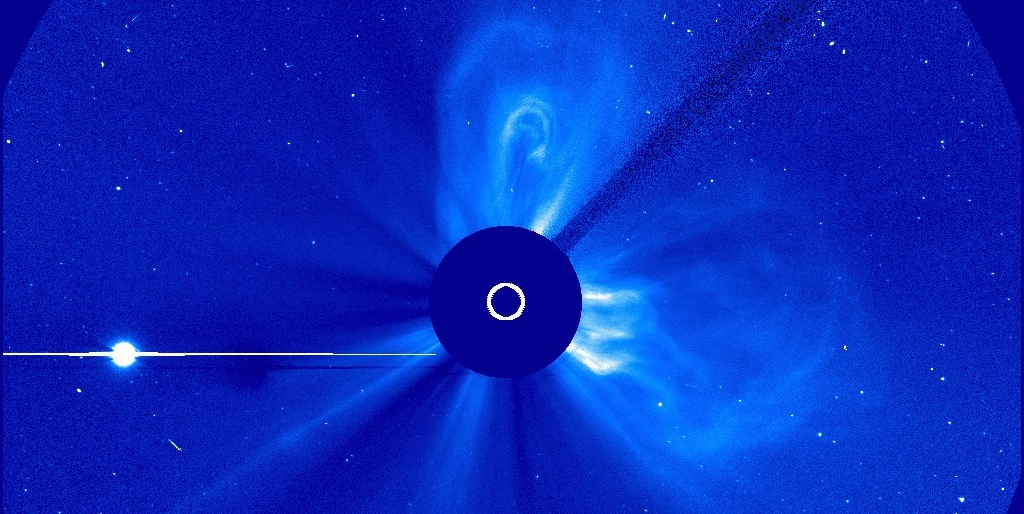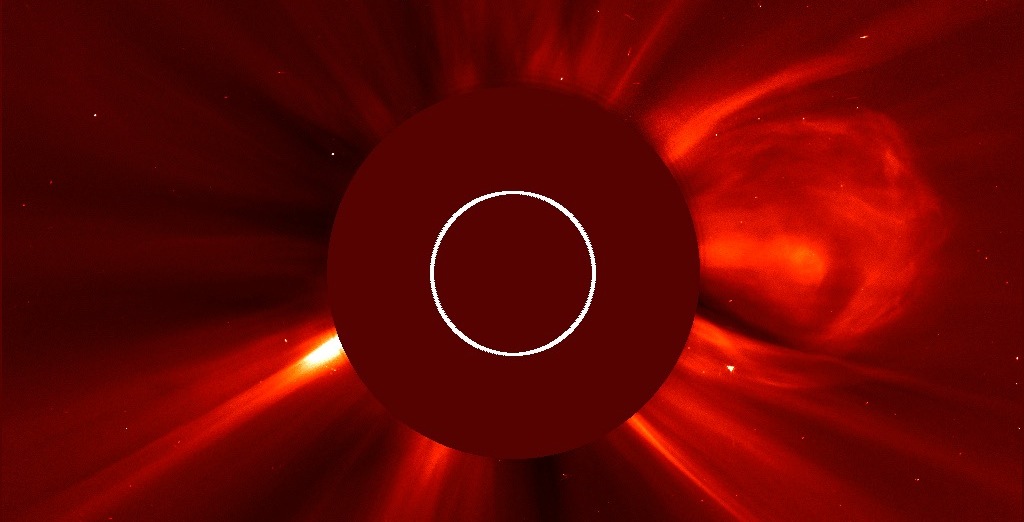On April 20, 2013, at 2:54 a.m. EDT, the sun erupted with a coronal mass ejection (CME), a solar phenomenon that can send billions of tons of solar particles into space that can affect electronic systems in satellites.
Experimental NASA research models show that the CME left the sun at 500 miles per second and is not Earth-directed. However, it may pass by NASA’s Messenger and STEREO-A satellites, and their mission operators have been notified. There is, however, no particle radiation associated with this event, which is what would normally concern operators of interplanetary spacecraft since the particles can trip computer electronics on board. When warranted, NASA operators can put spacecraft into safe mode to protect the instruments from the solar material.

UPDATE: 04.21.13, first update
The same region of the sun erupted with another coronal mass ejection (CME) at 3:54 a.m. on April 21, 2013. Experimental NASA research models show the CME left the sun at speeds of 550 miles per second. The models show that the CME will also pass by NASA’s Messenger and the flank of the CME may graze STEREO-A. The Messenger and STEREO mission operators have been notified. There may be some particle radiation associated with this event, which in the worst case scenarios can impact computer electronics on board interplanetary spacecraft. If warranted, operators can put spacecraft into safe mode to protect the instruments from the solar material.
UPDATE: 04.21.13, second update

Another coronal mass ejection (CME) has erupted from the sun, headed toward Mercury and NASA’s Messenger spacecraft. The CME began at 12:39 p.m. EDT on April 21, 2013. Experimental NASA research models show that the CME left the sun at 625 miles per second and that it will catch up to the CME from earlier on April 21 before the combined CMEs pass Messenger. There is also chance that the combined CMEs will give a glancing blow to STEREO-A. The Messenger and STEREO mission operators have been notified. There may be some particle radiation associated with this event, which in the worst case scenarios can impact computer electronics on board interplanetary spacecraft. If warranted, operators can put spacecraft into safe mode to protect the instruments from the solar material.
Via NASA











